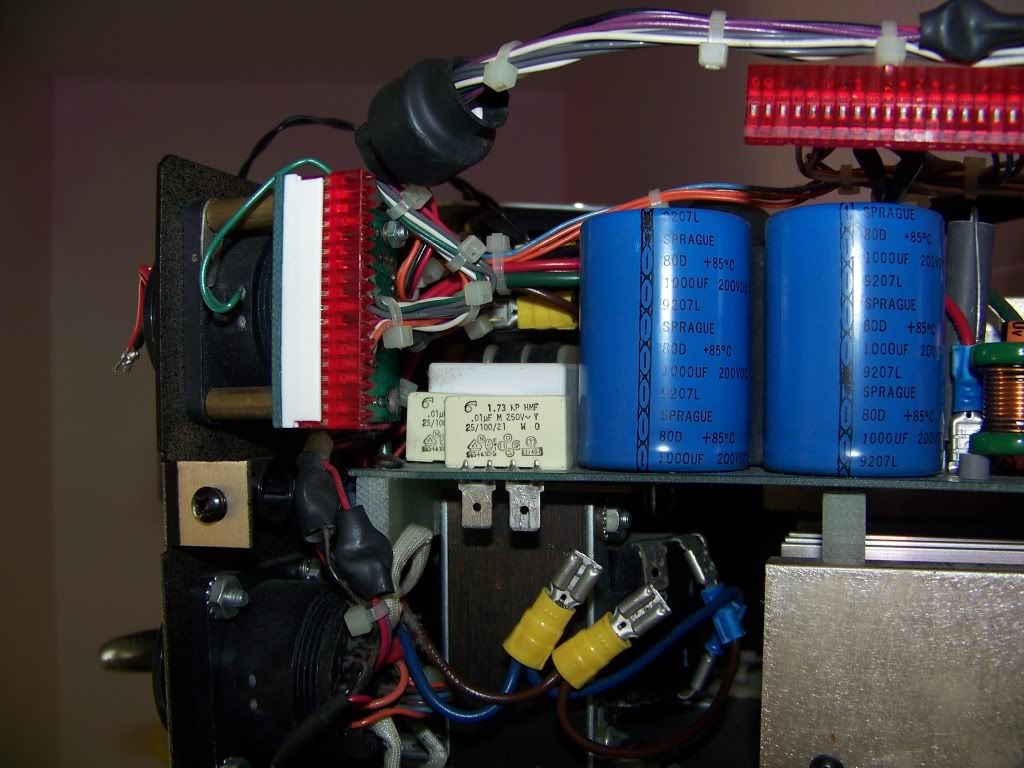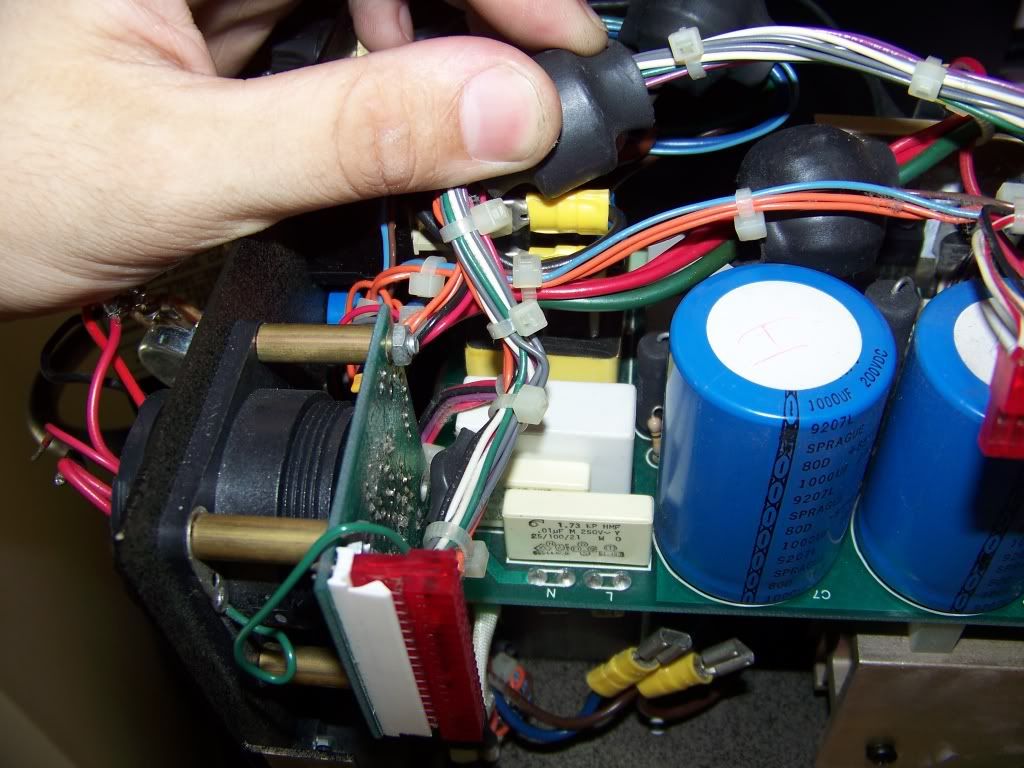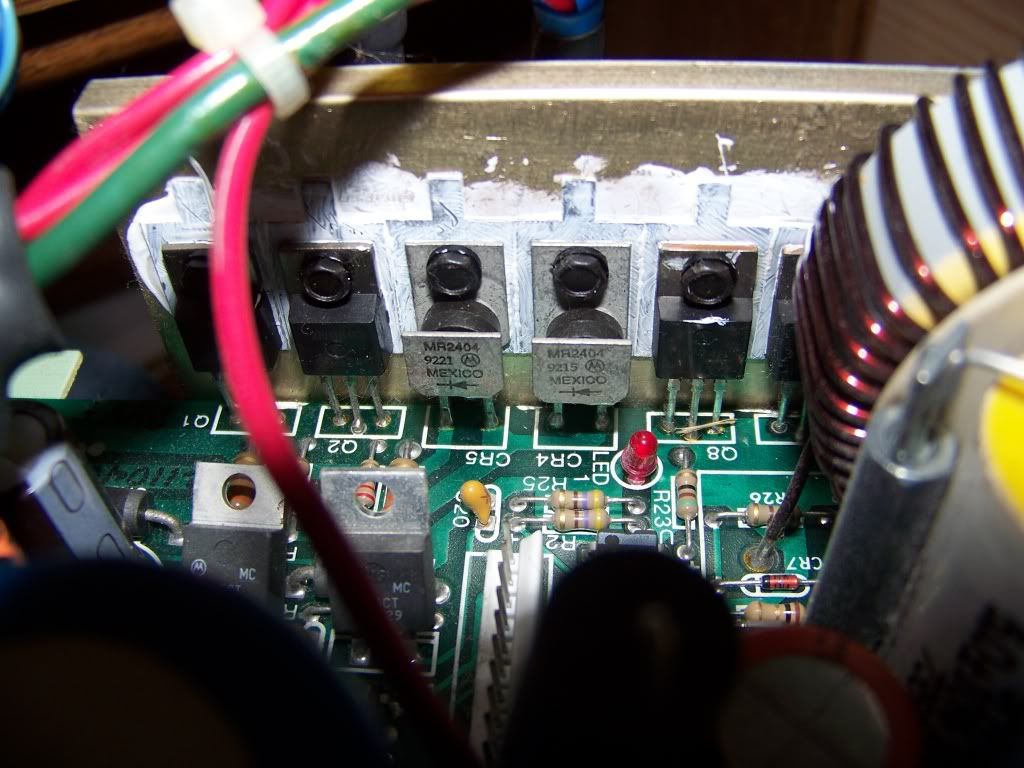GooeyGus
0
- Joined
- Mar 8, 2008
- Messages
- 2,669
- Points
- 48
Ok, so as some of you may know I'm trying to track down a short in the PSU of one of my Argon lasers.
SOOO... I have it narrowed down to a capacitor that is acting funny. Normally when I tested resistance across all the other capacitors, it started with a fairly low resistance which got higher as the meter pumped electricity into it. But this one is being a bit weird. When I try to test resistance across the capacitor in question, I get nothing. Not 'nothing' as in 0ohm, but nothing as in the meter sees it as an open circuit.
So my question is: While my meter see's this as an open circuit, the meter only uses MAYBE 6v when measuring resistance. This capacitor normally sees upwards of 150VAC (basically straight from the wall). Could an 'open circuit' at 6v actually be a short at 150V? Is this a typical failure mode of capacitors?
I'm not sure what kind of caps they are, but here is a picture for reference. The cap in question is the white one right in front, which you can see all the information on.


Thanks!!
GG
SOOO... I have it narrowed down to a capacitor that is acting funny. Normally when I tested resistance across all the other capacitors, it started with a fairly low resistance which got higher as the meter pumped electricity into it. But this one is being a bit weird. When I try to test resistance across the capacitor in question, I get nothing. Not 'nothing' as in 0ohm, but nothing as in the meter sees it as an open circuit.
So my question is: While my meter see's this as an open circuit, the meter only uses MAYBE 6v when measuring resistance. This capacitor normally sees upwards of 150VAC (basically straight from the wall). Could an 'open circuit' at 6v actually be a short at 150V? Is this a typical failure mode of capacitors?
I'm not sure what kind of caps they are, but here is a picture for reference. The cap in question is the white one right in front, which you can see all the information on.


Thanks!!
GG







